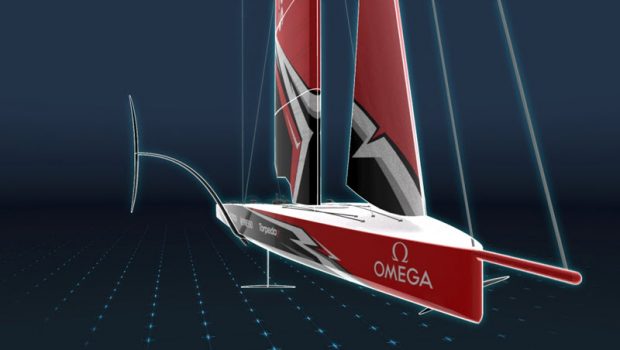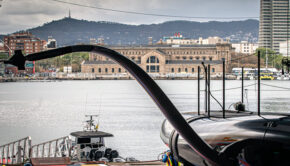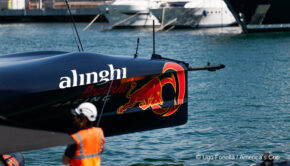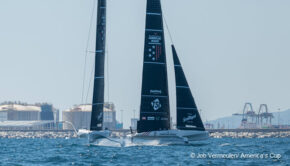Looking at what the future will be
Published on July 19th, 2018
When New Zealand won the 2017 America’s Cup, it signaled a return to monohulls for the next edition. That’s what they said at least, giving hope to frustrated followers who had become detached from the event during the catamaran era.
And in the most basic sense of the definition, the kiwis have delivered on that promise. However, if anyone was hoping for a return to classic combat during the heyday of the 12 Meter and IACC days, that was squashed when the Kiwi team revealed the AC75 in November 2017.
Unlike all previous boats for the America’s Cup, in which their design foundation had roots in something proven, the AC75 lived only in the minds of its designers and the analytical tools they use. The futuristic features of the AC75 looked more akin to a sci-fi movie prop than a boat to be sailed in a historic championship.
With the launch date next year of March 31st as the first time an AC75 can go in the water, for now we are left guessing what the future will be. Here are a couple soundbites from people that are looking:
Shirley Robertson, at the TP52 Worlds in her role as host for the CNN Mainsail Show, asked America’s Cup winning skipper Jimmy Spithill about the new boat for the next America’s Cup:
“This one will be another level. It’s extreme, it’s expensive, from first take, and what we are seeing, it’s unstable, and it’s going to very, very physical. Will it work? That’s the question. The America’s Cup has always been at the leading edge of boats. Look at what’s happened over the last decade. The AC72 kind of reminds me of this boat in that it is very, very powerful and never been done before. The speeds we could have… it’ll be a beast of a boat. It’s out there.”
During an America’s Cup panel discussion at New York Yacht Club, naval architect Scott Ferguson, a two-time America’s Cup winner and Design Coordinator for Oracle Team USA in the 2017 America’s Cup, was asked whether traditional match racing pre-starts will occur or if the boats will be less connected prior to the start similar to the catamarans:
“It states briefly in the Protocol that there’ll be windward leeward courses with normal upwind starts, so that lays the groundwork for the possibility of more match racing. But it’s hard to predict with boats this fast that they’ll really be engaging starts because the maneuverability when they are going slow won’t be very good. I am not sure it will be back to the same type of dial-ups that we used to see in the IACC boats.”
Tucker Thompson, hosting the discussion, added how due to the foil appendages extending from the sides of the boat, there is dialogue now of how each boat will have a virtual boundary surrounding it that the opposing boat cannot cross without getting penalized.
Boats in a bubble? Welcome to the future.
Key America’s Cup dates:
✔ September 28, 2017: 36th America’s Cup Protocol released
✔ November 30, 2017: AC75 Class concepts released to key stakeholders
✔ January 1, 2018: Entries for Challengers open
✔ March 31, 2018: AC75 Class Rule published
✔ June 30, 2018: Entries for Challengers close
August 31, 2018: Location of the America’s Cup Match and The PRADA Cup confirmed
August 31, 2018: Specific race course area confirmed
November 30, 2018: Late entries deadline
March 31, 2019: Boat 1 can be launched
2nd half of 2019: 2 x America’s Cup World Series Preliminary Events
February 1, 2020: Boat 2 can be launched
During 2020: 3 x America’s Cup World Series Preliminary Events
December 10-20, 2020: America’s Cup Christmas Race
January and February 2021: The PRADA Cup Challenger Selection Series
March 2021: The America’s Cup Match
Details: www.americascup.com









 We’ll keep your information safe.
We’ll keep your information safe.